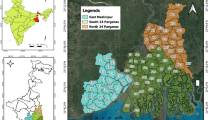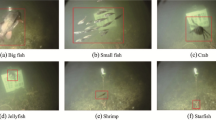Abstract
The availability of high-resolution synthetic aperture radar (SAR), optical, radio frequency (RF), and other types of satellite imagery has improved, accelerating their utility in maritime monitoring (e.g., ship detection and tracking). Although high-resolution images from polar orbit satellites are considered for ship detection, their application is limited by the long revisit cycles of the satellites. The geostationary ocean color imager (GOCI-II), a geostationary ocean color satellite of South Korea (resolution of 250 m), overcomes this limitation by observing the waters that surround Northeast Asia every 1 h (10 times a day). This study investigates the feasibility and effectiveness of GOCI-II satellite imagery for ship detection, based on the near-infrared band. We tested the possibility of ship trajectory monitoring using multitemporal GOCI-II data. The testbeds for the ship detection effectiveness of GOCI-II were Busan, Yeosu, and Jeju in South Korea. The results indicated a few false detections because the automatic identification system (AIS) time did not match the threshold-section setting. However, several large and small ships were detected, with a major axis for each class. The detection rates for Busan (excluding the ships moored in ports) and Yeosu were 27 and 29.5%, respectively, confirmed through comparisons with the AIS data. Multitemporal ship detection and tracking was applied to a 50,000-ton ship navigating near Jeju Island, with an accuracy of 0–3 pixels. Furthermore, the possibility of detecting small ships (30-m class) was verified. This study can contribute to a paradigm shift in satellite-based ship monitoring by integrating high-resolution satellite imagery.











Similar content being viewed by others
Data availability
The GOCI-II data used in this manuscript is an open access data distributed by the Korea Hydrographic and Oceanographic Agency (KHOA).
References
Ahn J-H, Kim K-S, Lee E-K, Bae S-J, Lee K-S, Moon J-E, Han T-H, Park Y-J (2021) Introduction of GOCI-II atmospheric correction algorithm and its initial validations. Korean J Remote Sens 37(5–2):1259–1268. https://doi.org/10.7780/kjrs.2021.37.5.2.4
Ahn Y-H, Ryu J-H, Cho S-I, Kim S-H (2010) Missions and user requirements of the 2nd geostationary ocean color imager (GOCI-II). Korean J Remote Sens 26(2):277–285. https://doi.org/10.7780/kjrs.2010.26.2.277
Androjna A, Perkovič M, Pavic I, Mišković J (2021) AIS data vulnerability indicated by a spoofing case-study. Appl Sci 11(11):5015. https://doi.org/10.3390/app11115015
Baek W-K, Jung H-S (2019) A review of change detection techniques using multi-temporal synthetic aperture radar images. Korean J Remote Sens 35(5–1):737–750. https://doi.org/10.7780/kjrs.2019.35.5.1.10
Baek W-K, Jung H-S (2020) Precise three-dimensional deformation retrieval in large and complex deformation areas via integration of offset-based unwrapping and improved multiple-aperture SAR interferometry: application to the 2016 Kumamoto earthquake. Engineering 6(8):927–935. https://doi.org/10.1016/j.eng.2020.06.012
Baek W-K, Jung H-S (2021) Performance comparison of oil spill and ship classification from x-band dual-and single-polarized SAR image using support vector machine, random forest, and deep neural network. Remote Sens 13(16):3203. https://doi.org/10.3390/rs13163203
Brusch S, Lehner S, Fritz T, Soccorsi M, Soloviev A, van Schie B (2010) Ship surveillance with TerraSAR-X. IEEE T Geosci Remote 49(3):1092–1103. https://doi.org/10.1109/TGRS.2010.2071879
Chang J-Y, Oh H, Lee S-J, Lee K-J (2020) Ship detection for KOMPSAT-3A optical images using binary features and adaboost classification. In: IGARSS 2020-2020 IEEE international geoscience and remote sensing symposium, pp 968–971. https://doi.org/10.1109/IGARSS39084.2020.9323847
Ciocarlan A, Stoian A (2021) Ship detection in Sentinel 2 multi-spectral images with self-supervised learning. Remote Sens 13(21):4255. https://doi.org/10.3390/rs13214255
Daniel BJ, Schaum AP, Allman EC, Leathers RA, Downes TV (2013) Automatic ship detection from commercial multispectral satellite imagery. In: SPIE 2013 Optics+Photonics, San Diego, California, United States, pp 316–323. https://doi.org/10.1117/12.2017762
Dong L, Yali L, Fei H, Shengjin W (2013) Object detection in image with complex background. In: 3rd International conference on multimedia technology (ICMT-13), Guangzhou, pp 471–478. https://doi.org/10.2991/icmt-13.2013.58
Fan J, Zhao J, An W, Hu Y (2019) Marine floating raft aquaculture detection of GF-3 PolSAR images based on collective multikernel fuzzy clustering. IEEE J Sel Top Appl 12(8):2741–2754. https://doi.org/10.1109/JSTARS.2019.2910786
Gordon HR (1978) Removal of atmospheric effects from satellite imagery of the oceans. Appl Opt 17(10):1631–1636. https://doi.org/10.1364/AO.17.001631
Gordon HR, Brown JW, Evans RH (1988) Exact rayleigh scattering calculations for use with the Nimbus-7 coastal zone color scanner. Appl Opt 27(5):862–871. https://doi.org/10.1364/AO.27.000862
Gordon HR, Wang M (1992) Surface-roughness considerations for atmospheric correction of ocean color sensors. 1: the Rayleigh-scattering component. Appl Opt 31(21):4247–4260. https://doi.org/10.1364/AO.31.004247
Graziano MD (2020) Preliminary results of ship detection technique by wake pattern recognition in SAR images. Remote Sens 12(18):2869. https://doi.org/10.3390/rs12182869
Hwang J-I, Chae S-H, Kim D, Jung H-S (2017) Application of artificial neural networks to ship detection from x-band Kompsat-5 imagery. Appl Sci 7(9):961. https://doi.org/10.3390/app7090961
International Telecommunication Union (2014) Technical characteristics for an automatic identification system using time division multiple access in the VHF maritime mobile frequency band (M Series Mobile, radiodetermination, amateur and related satellite services). International Telecommunication Union, Geneva, p 115
Jeong J, Han H, Park Y (2020) Geometric accuracy analysis of the geostationary ocean color imager (GOCI) level 1B (L1B) product. Opt Express 28(5):7634–7653. https://doi.org/10.1364/OE.370717
Kanjir U, Greidanus H, Oštir K (2018) Vessel detection and classification from spaceborne optical images: a literature survey. Remote Sens Environ 207:1–26. https://doi.org/10.1016/j.rse.2017.12.033
Kim S-W, Kim D, Lee Y-K, Lee I, Lee S, Kim J, Kim K, Ryu J-H (2020) Operational ship monitoring based on multi-platforms (Satellite, UAV, HF Radar, AIS). Korean J Remote Sens 36(2–2):379–399. https://doi.org/10.7780/KJRS.2020.36.2.2.12
Korea Ocean Satellite Center (2020) Introducing the geostationary ocean color imager-II. https://kosc.kiost.ac.kr/index.nm?menuCd=44. Accessed 2 Nov 2023
Lee J, Kim K, Ryu J-H (2021a) A study on the possibility of short-term monitoring of coastal topography changes using GOCI-II. Korean J Remote Sens 37(5–2):1329–1340. https://doi.org/10.7780/KJRS.2021.37.5.2.10
Lee S-J, Lee K-S, Han T-H, Moon J-E, Bae S, Choi J-K (2021b) Introduction on the products and the quality management plans for GOCI-II. Korean J Remote Sens 37(5–2):1245–1257. https://doi.org/10.7780/KJRS.2021.37.5.2.3
Liu Z, Wang H, Weng L, Yang Y (2016) Ship rotated bounding box space for ship extraction from high-resolution optical satellite images with complex backgrounds. IEEE Geosci Remote S 13(8):1074–1078. https://doi.org/10.1109/lgrs.2016.2565705
National Ocean Satellite Center (2021) GOCI-II LA Downloads. Korea Hydrographic and Oceanographic Agency (KHOA). https://www.nosc.go.kr/eng/program/actionGociDownload.do. Accessed 2 Dec 2023
Ryu J-H, Han H-J, Cho S, Park Y-J, Ahn Y-H (2012) Overview of geostationary ocean color imager (GOCI) and GOCI data processing system (GDPS). Ocean Sci J 47:223–233. https://doi.org/10.1007/s12601-012-0024-4
Sonkar A, Kumar S, Kumar N (2023) Spaceborne SAR-based detection of ships in Suez Gulf to analyze the maritime traffic jam caused due to the blockage of Egypt’s Suez Canal. Sustainability 15(12):9706. https://doi.org/10.3390/su15129706
Straka WC III, Seaman CJ, Baugh K, Cole K, Stevens E, Miller SD (2015) Utilization of the Suomi national polar-orbiting partnership (NPP) visible infrared imaging radiometer suite (VIIRS) day/night band for arctic ship tracking and fisheries management. Remote Sens 7(1):971–989. https://doi.org/10.3390/rs70100971
Xie X, Xu Q, Hu L (2016) Fast ship detection from optical satellite images based on ship distribution probability analysis. In: 2016 4th International workshop on Earth observation and remote sensing applications (EORSA), GuangZhou, pp 97–101. https://doi.org/10.1109/EORSA.2016.7552774
Yu W, You H, Lv P, Hu Y, Han B (2021) A moving ship detection and tracking method based on optical remote sensing images from the geostationary satellite. Sensors 21(22):7547. https://doi.org/10.3390/s21227547
Wang M (2005) A refinement for the Rayleigh radiance computation with variation of the atmospheric pressure. Int J Remote Sens 26(24):5651–5663. https://doi.org/10.1080/01431160500168793
Wang M (2016) Rayleigh radiance computations for satellite remote sensing: accounting for the effect of sensor spectral response function. Opt Express 24(11):12414–12429. https://doi.org/10.1364/OE.24.012414
Wei S, Zeng X, Qu Q, Wang M, Su H, Shi J (2020) HRSID: A high-resolution SAR images dataset for ship detection and instance segmentation. IEEE Access 8:120234–120254. https://doi.org/10.1109/ACCESS.2020.3005861
Zhang S, Wu R, Xu K, Wang J, Sun W (2019) R-CNN-based ship detection from high resolution remote sensing imagery. Remote Sens 11(6):631. https://doi.org/10.3390/rs11060631
Yao L, Liu Y, He Y (2018) A novel ship-tracking method for GF-4 satellite sequential images. Sensors 18(7):2007. https://doi.org/10.3390/s18072007
Acknowledgements
This research was supported by Korea Institute of Marine Science & Technology Promotion (KIMST) funded by the Ministry of Oceans and Fisheries (20200495, “Development of satellite based system on monitoring and predicting ship distribution in the contiguous zone”).
Author information
Authors and Affiliations
Corresponding author
Additional information
Publisher's Note
Springer Nature remains neutral with regard to jurisdictional claims in published maps and institutional affiliations.
Rights and permissions
Springer Nature or its licensor (e.g. a society or other partner) holds exclusive rights to this article under a publishing agreement with the author(s) or other rightsholder(s); author self-archiving of the accepted manuscript version of this article is solely governed by the terms of such publishing agreement and applicable law.
About this article
Cite this article
Jang, Y., Kim, K., Baek, WK. et al. Feasibility of Ship Detection and Tracking Using GOCI-II Images. Ocean Sci. J. 59, 16 (2024). https://doi.org/10.1007/s12601-024-00141-6
Received:
Revised:
Accepted:
Published:
DOI: https://doi.org/10.1007/s12601-024-00141-6




